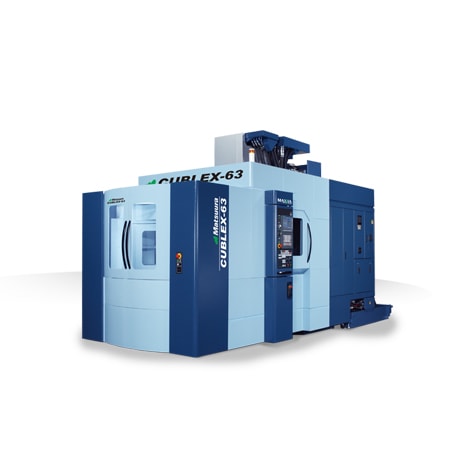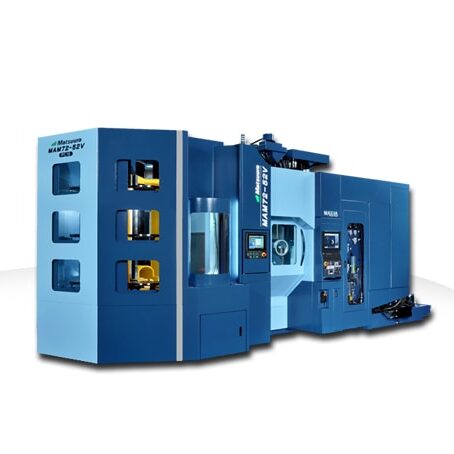 St. Paul, MN (May 20, 2020) — As regional reopenings from complete or partial shutdowns in response to the COVID-19 pandemic appear on the horizon, manufacturers and suppliers are scrambling to develop and enact operational restart plans.
St. Paul, MN (May 20, 2020) — As regional reopenings from complete or partial shutdowns in response to the COVID-19 pandemic appear on the horizon, manufacturers and suppliers are scrambling to develop and enact operational restart plans.
According to Industry Week, navigating this dynamic operational landscape under normal circumstances can be difficult; in the face of an ongoing pandemic, it is extremely difficult to say the least. There is no “one size fits all” playbook on how to best adapt to the reality of the operational complications that come with mitigating COVID-19 risks and protecting your workforce, while also producing in a way that economically makes sense to the business. But there are tools and guidelines that can serve as a strong foundation to drive your operational readiness from Terry Onica and Cathy Fisher:
Operational Restart Readiness Checklist:
- Contingency Plans. The starting point in any crisis should be the review of the organization’s existing contingency plans as a basis for establishing recovery actions. Although contingency plans may not specifically include COVID-19, these should address conditions of unexpected operational disruptions and include essential actions to restore operations to ensure continuity of supply to customers. Overall, contingency planning should include customer-specific contingency notification and reporting requirements; “start-up” checklists; a review of current contingency plans; developing any missing plans; processes for capturing immediate lessons learned for future contingency plan updates; and any immediate updates to your organization’s Emergency Action Plans.
- Inventory. A full view of current inventory is also a critical first step in restarting operations. This includes a comparison of physical and digital inventory of finished goods, partially finished goods awaiting completion (WIP) and raw materials/components. Consideration should also be given to shelf-life sensitive items and whether adequate storage conditions have been maintained during the shut-down. Other inventory-related factors to consider include lot control/traceability, inventory in transition due to engineering changes and the status of nonconforming product awaiting disposition, rework, etc.
- Immediate Customer Delivery Requirements. Communication with customers is vital to ensure a successful restart of operations aligned with customer demand. Understanding immediate customer delivery requirements based on open customer orders and updated release schedules will provide the basis for establishing your organization’s near-term production requirements. Organizations should also be on the lookout for supplier bulletins and interim CSRs (customer-specific requirements) from their customers.
- Immediate Delivery Plan Including Transportation. With a clear understanding of immediate customer requirements, ensuring delivery plans can be met is the next area of focus. This includes determining availability of returnable packaging, adjusting part sequencing plans and confirming outbound carrier availability. Customs/border control issues must also be identified.
- Supplier Inventory and Near-term Delivery Plan. Your organization’s success in restarting operations is dependent upon the status of your suppliers. Understanding where your suppliers are located through supplier mapping can help your organization anticipate potential delays in supply due to ongoing government orders (e.g. stay-at-home mandates). Providing your suppliers with a restart checklist will also ensure all suppliers evaluate potential risks related to key operational restart topics. Suppliers should also be encouraged to apply a similar restart structure with their sub-suppliers.
- Availability of Outsourced Processes. When considering the status of suppliers, it is important to include providers of outsourced processes and service providers. Understanding the location of these providers and their operational status (shut-down, partial operations, staffing availability, etc.) is essential in planning your organization’s restart. The same topics of restart consideration with direct material suppliers can be applied to outsourced process/service providers as well.
- Temporary Process Changes Due to Virus Risk Reduction Actions – With the introduction of controls to reduce the possibility of COVID-19 transmission in the workplace, your organization may find it necessary to make changes to your manufacturing operations. These changes may include revising work sequences, consolidating job content or possibly even introducing alternative processing equipment. These process changes, even temporary, require evaluation of process risks and development of controls (Control Plan) to ensure product quality. In addition, work instructions may need to be revised and re-training of operations personnel performed.
- Product/Process Requalification Plan – With an extended shut-down of operations for many organizations, the need to requalify products and manufacturing processes upon restart should be considered. Consideration should be given to the impact an extended shut-down could have on equipment as well as the learning curve for requalification of operations personnel. Other considerations for product/process requalification include rechecking error-proofing devices and re-verifying gauging/measurement equipment, reviewing the status of open Quality Alerts and product containments initiated prior to shut-down as well as process trials previously in progress.
- Accuracy of Work Instructions – A critical success factor to the restart of operations is the ability to recall and transfer knowledge related to executing daily tasks. Work instructions for manufacturing operations as well as support functions at all levels, including leadership roles, should be reviewed for accuracy and sufficient detail. Work instructions will also need to be updated with any new safety rules for control of COVID-19 in your operations.
- Equipment, Tooling & Gauging Restart Risks and Maintenance – It is critical to look at high-risk equipment/tooling that is restart sensitive. A review of equipment restart procedures, tooling condition, effectiveness of equipment/tooling/gauging packaging and preservation conditions should also be considered, especially if the shut-down of operations was abrupt with limited preparation. Consideration should also be given to resetting time-dependent maintenance routines and reviewing spare parts inventories. The status of maintenance/tooling outsourced service providers should also be checked to ensure they are available to support the restart of your operations.
- Workforce Availability and Training – The biggest challenge organizations will face when restarting their operations will be adequate staffing and protecting their workers from potential exposure to COVID-19. Gaining a clear understanding of which employees will return to work and in what timeframe will be key to restarting operations. Job descriptions should be carefully reviewed to ensure they are up-to-date and reflect the assignment of operational roles and responsibilities as well as necessary competencies to perform tasks. With many workers being away from their processes for an extended time, re-training and re-qualification will be needed not only for job-specific tasks but also for business policies and new safety practices introduced as a result of the actions taken to control COVID-19 in the workplace. Cross-training may also be necessary due to staffing constraints, which may also necessitate the use of temporary/contract workers to fill immediate job vacancies.
- Facility Infrastructure – Your organization’s infrastructure also needs to be considered for potential operational restart risks. Plant energy media including electricity, compressed air, etc. need to be stabilized to support the restart of operations and potential impact on equipment. Inventory and sourcing of non-production items such as PPE (personal protective equipment) and cleaning supplies need to be assured. Waste streams may need to be reviewed due to an increased use of disposable PPE and cleaning supplies. And with certain functions continuing to work from home, IT systems should be reviewed, especially from a cybersecurity standpoint.
- Communication Plans to All Stakeholders – Ultimately, the success of your organization’s operational restart will depend primarily on the effectiveness of communications internally as well as with customers and suppliers. Communications regarding your organization’s restart plans, status of operations, actions to protect your workforce and even your community should be considered. Establishing a communication plan that addresses all interested parties and provides consistent communications on a regular cadence will provide the foundation for a successful operational restart.
Each of these topics should be reviewed from a risk-perspective and detailed plans developed to ensure actions necessary to support a restart of your operations.
Terry Onica is director of automotive at cloud ERP software company QAD, and a former supervisor of supplier EDI at Johnson Controls. Cathy Fisher is president of Quistem, an automotive consulting firm.
At Matsuura USA, we understand that the coronavirus (COVID-19) and its resulting impact has caused disruption and uncertainty for our customers. We remain ‘Open for Business’ and committed to providing consistent, high quality service while keeping our customers, business partners and employees safe and informed.
As we closely monitor the situation and follow guidance from public health officials and government agencies, including the Center for Disease Control and the World Health Organization, we would like to express our gratitude for all local, state, and federal officials, as well as those in health care who are all working diligently to contain the virus.
At Matsuura, business continuity remains a priority for our leadership team and those that directly serve your needs. In response to the pandemic, we have proactively expanded our corporate preparedness plan, in place in the event of natural disasters or other widespread emergencies, to maintain business continuity. We are very focused on protecting the health and safety of our workforce, while maintaining the ability to keep serving you.
We are also grateful for the commitment our employees have in providing service and parts to our customers. The COVID-19 virus directive from the US Government stresses the need for employees in companies such as ours to continue to work to support critical infrastructure as defined by the Department of Homeland Security.
We have no concerns about disruption nor delay of service, and there are no known impacts to our supply chain nor workforce that will impact demand for our products and services. Our technical and support teams are geographically dispersed throughout the US, allowing us to serve our customers’ needs at the same level of service we typically provide. We have also verified that our business partners have defined business continuity plans in place.
Matsuura has a long history of serving our customers and we remain committed to being a trusted partner of yours during this difficult and unprecedented global event.
We encourage our customers to contact Matsuura with Sales, Applications, Service and Parts Requests. Our website will direct you to your local Matsuura Distributor for sales information.
Matsuura Machinery USA, Inc., located in St. Paul, MN is the U.S. subsidiary of Matsuura Machinery Corporation in Japan. Since 1935, Matsuura has been the forerunner in designing innovative technology and manufacturing solutions to a variety of industries around the globe. Matsuura Machinery USA, Inc. delivers unmatched excellence in 5-axis, vertical, horizontal, linear motor, multi-tasking CNC machine tools and machines with a powder bed metal AM platform with machining capability. Matsuura Machinery USA, Inc. provides the service, applications and technical field support that have always been the Matsuura standard for business.






























